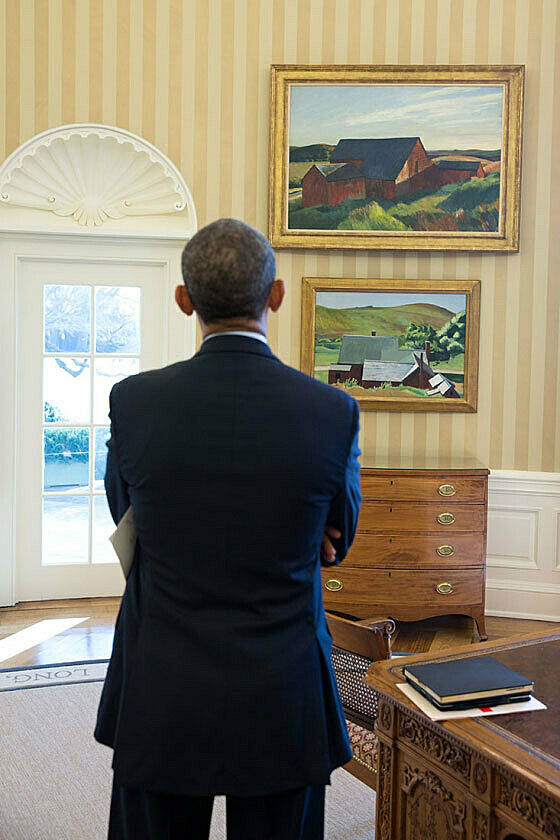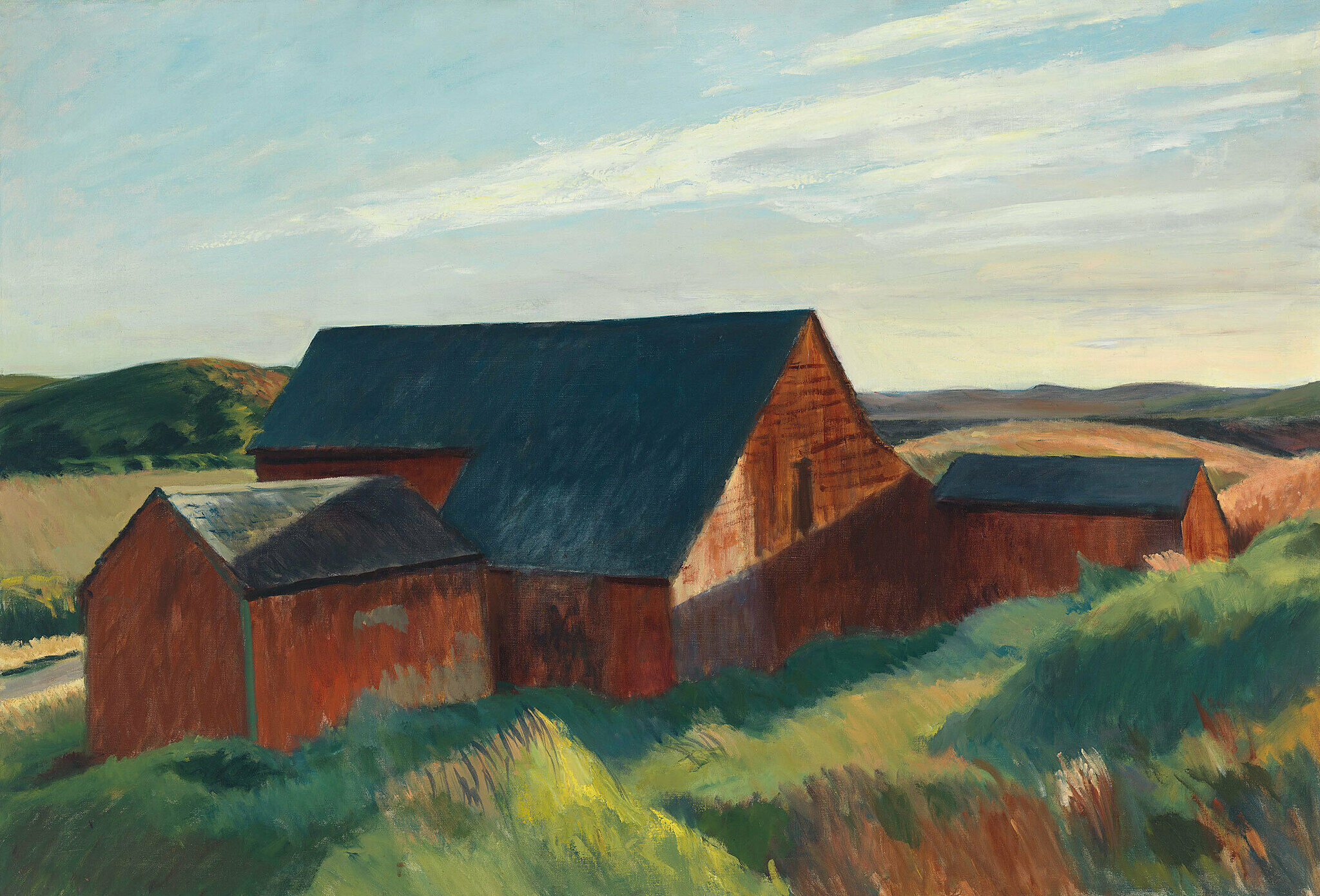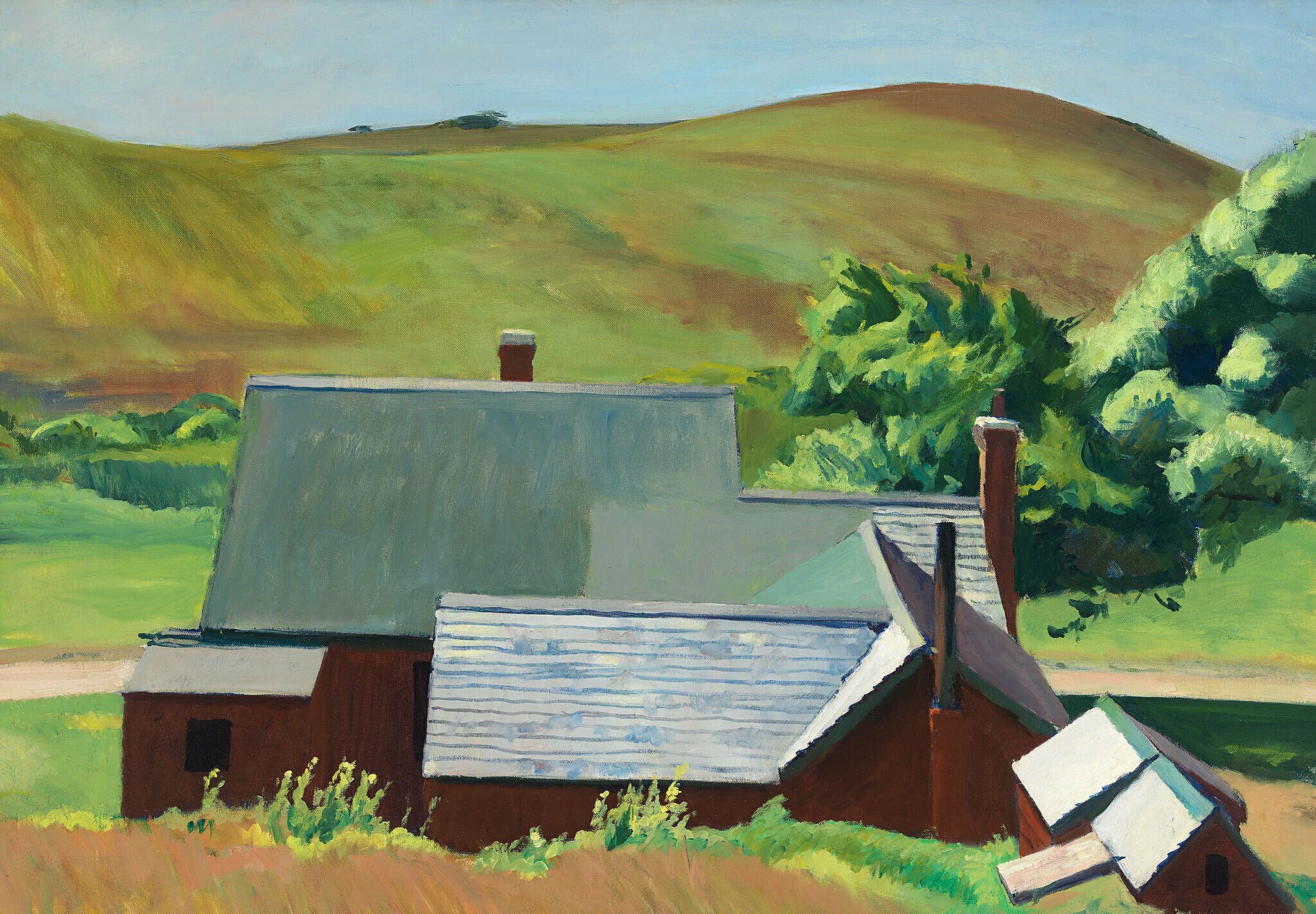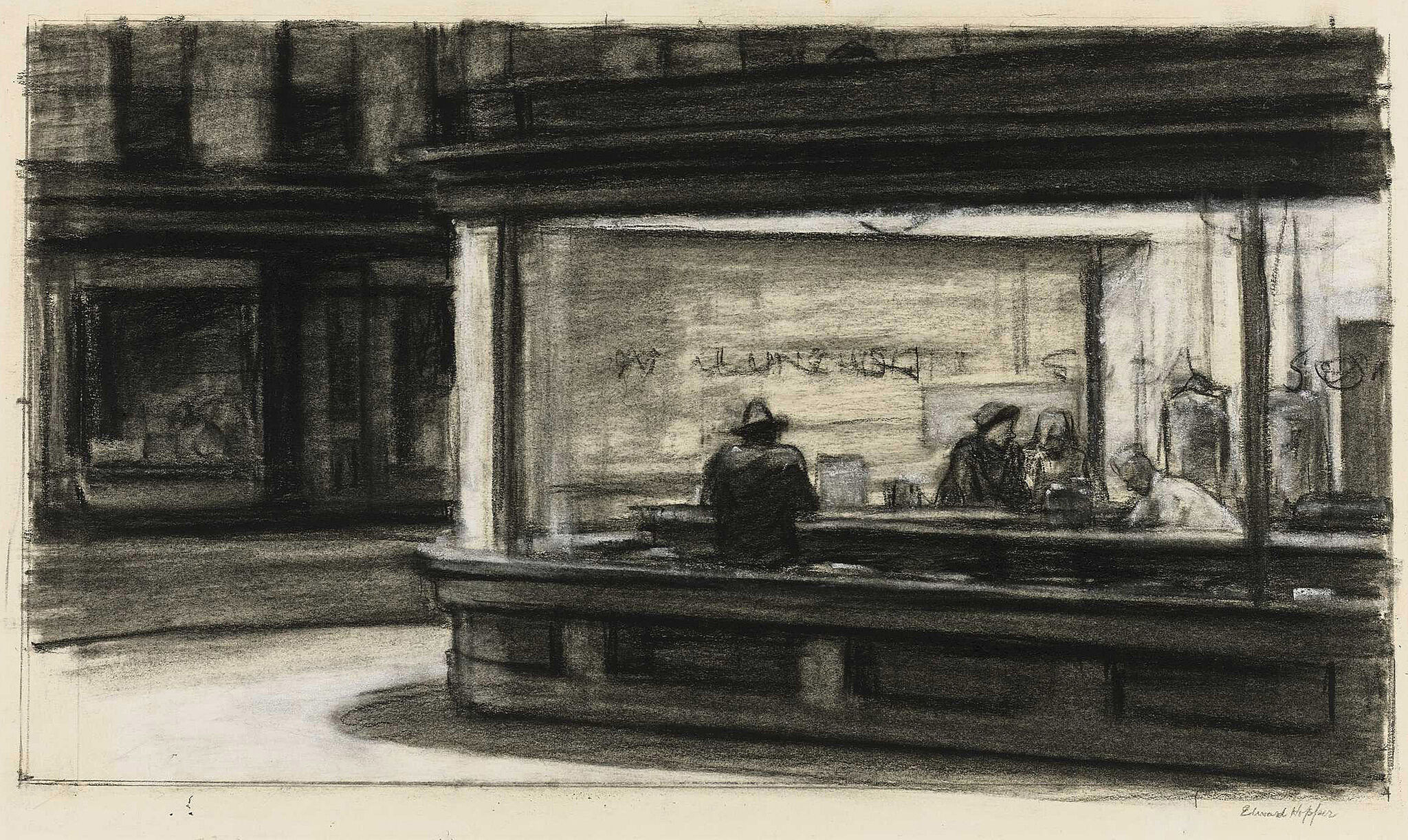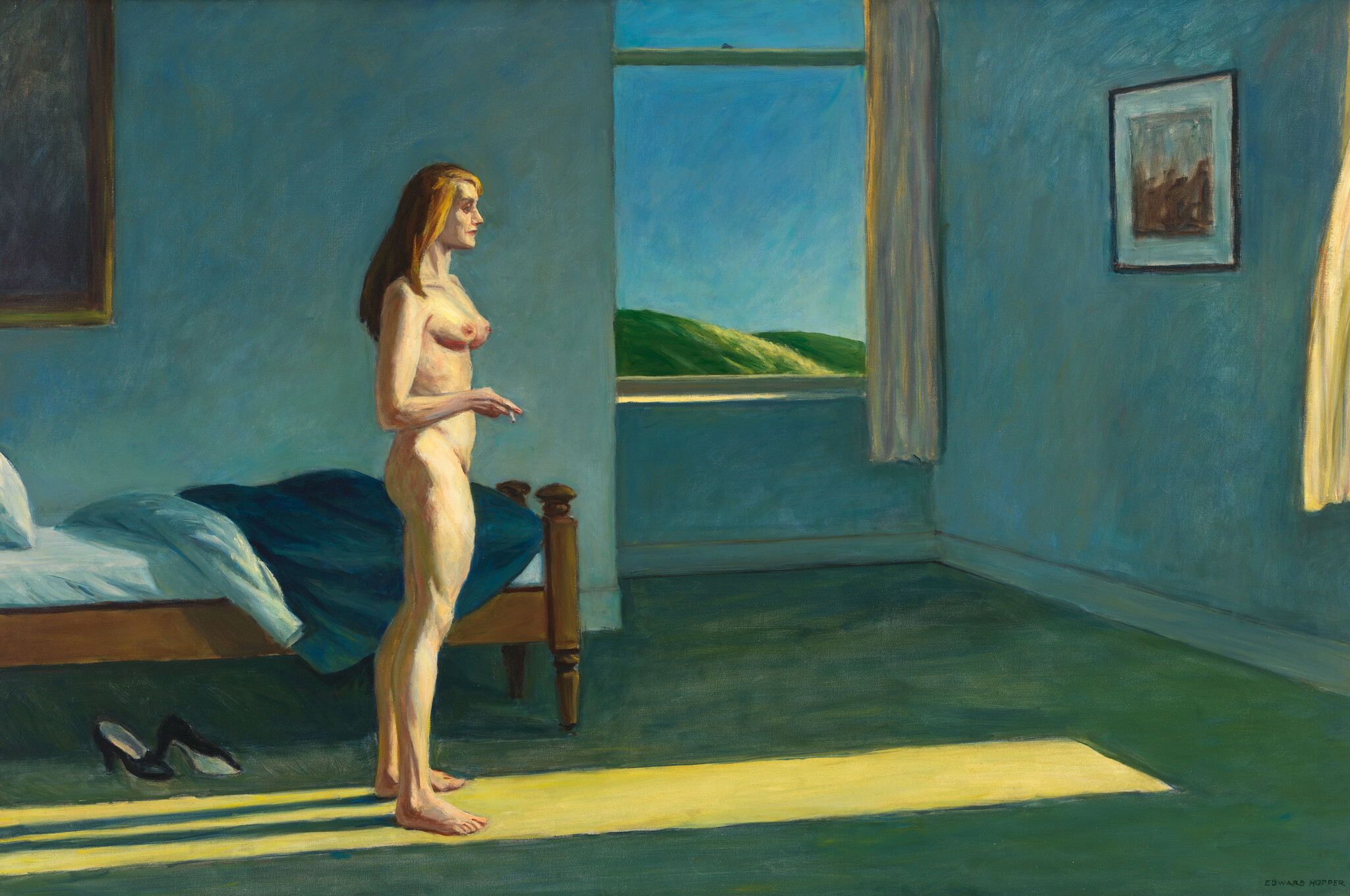Two of the Whitney's Hoppers Keep the President Company in the Oval Office
Feb 19, 2014
On February 7, two Edward Hopper paintings from the Whitney Museum’s collection were installed in a new, notable setting. The Cape Cod landscapes, Burly Cobb’s House, South Truro and Cobb’s Barns, South Truro, both dated 1930–1933, are on temporary loan to the White House, and are among the works situated closest to President Obama in the Oval Office. Part of the Whitney's extensive collection of works by Hopper--the largest repository in the world, containing more than 2,500 of the artist's paintings, drawings, watercolors, and prints--the paintings are emblematic examples of his work.
Dana Miller, curator of the Whitney's permanent collection, who coordinated the loan and facilitated the installation at the White House, answered questions about the selection process.
Can you provide some insight into why Edward Hopper was chosen, as opposed to any other American artist in the Whitney’s collection? Were there any parameters or constraints you had to consider when making the selection?
Dana Miller: In discussing possible loans from the Whitney's collection with the White House I learned that President Obama is fond of Hopper's work. Once we settled on Hopper, we could only consider paintings because of the significant amount of natural light in the Oval Office. Works on paper should not be exposed to that level of light for long periods of time. Of course there were size limits too, given the space available on the walls. I eliminated works that were out on loan and those that had already been promised to other institutions for loans. Then it was very important to the White House that they not borrow anything that was already on view at the Museum. They did not want us taking anything off our walls and away from our public so that it could go to the Oval Office.
In terms of subject matter, I felt that the many Hopper paintings we have in the collection that were made in France and depict Parisian landmarks were not ideal for this setting. So I didn’t share those images with the White House. Without explicitly discussing this with the White House, I was probably selecting images that transmitted something of the American landscape or American vernacular architecture.
What were the reasons for selecting these two paintings in particular? Why might these works be well suited to the highly symbolic space of the Oval Office (also a working space)?
These were two of the paintings that fit all of the criteria above, and I sent images along to the White House for consideration. I did not know which wall they had in mind, nor that they intended to show them one above another until much later.
I was thinking primarily of the perspective of the viewer inside the Oval Office, but I did do some Internet searches of the Oval Office and looked at the art hanging on the walls through various administrations. I was aware that these two Hopper images had a very graphic quality that would read well from a longer distance and in photography.
How did you feel when you saw the works installed on the Oval Office wall? Does their new context change the way they read?
There was something pretty wonderful about the way the light was streaming into the Oval Office the day we hung the works, in that it mimicked the lighting in Cobb's Barn. With Hopper it is so much about the quality of light, and I think the early morning light at that moment echoed what we were seeing in the painting and I remember remarking upon that to Barbi Spieler, Head Registrar for the Permanent Collection, who was there as well. For obvious reasons we don't often see Hopper paintings in natural light at the Museum.
When I saw the official White House photograph taken by Chuck Kennedy of The President standing in front of the two paintings, I thought it looked like a Hopper composition. Hopper's urban scenes are often of a solitary figure caught in quiet contemplation, and that's what the photograph captured. The light in the office and the sense of stillness are very Hopper-esque; the sun even seems to be coming into the office at the precise angle of the sun in the painting. And the back of The President recalls the back of the figure in Hopper's most famous painting, Nighthawks. I'm guessing Chuck Kennedy knew exactly what he was doing. And of course, it was deeply gratifying to see an image of President Obama so intently focused on the paintings.

